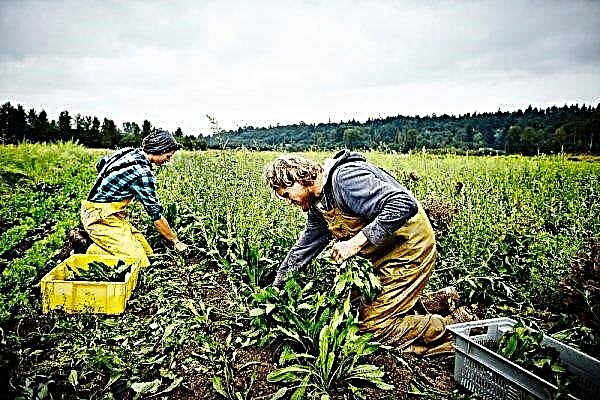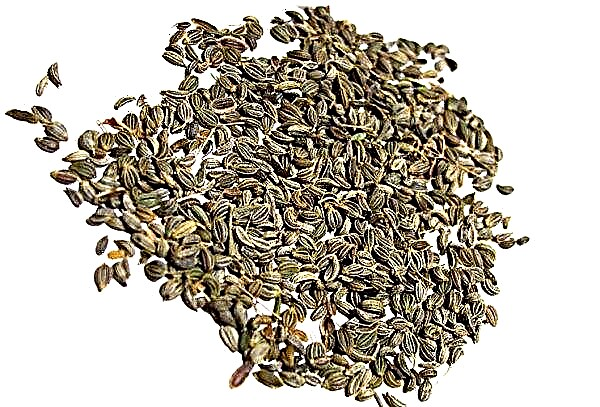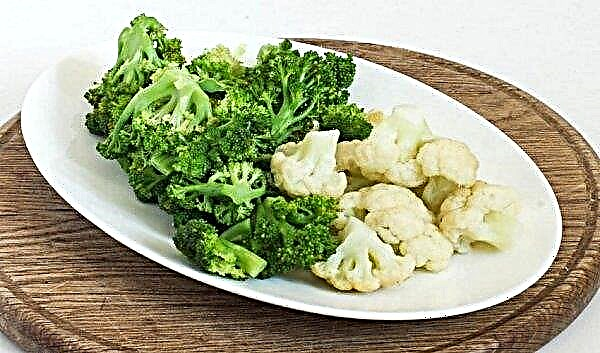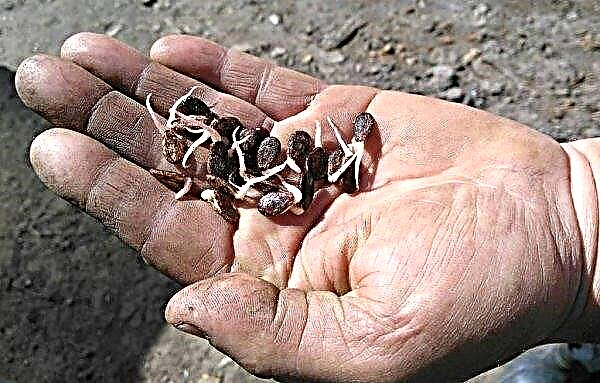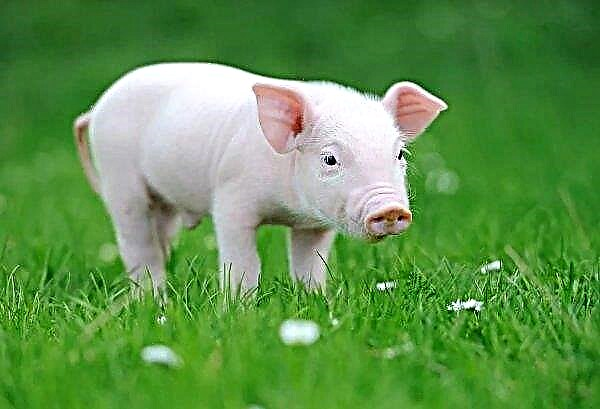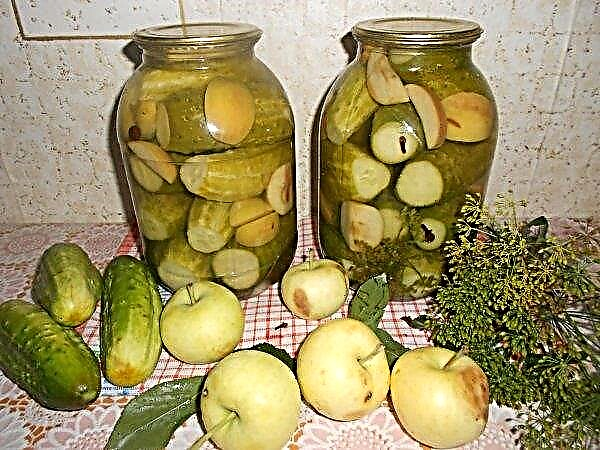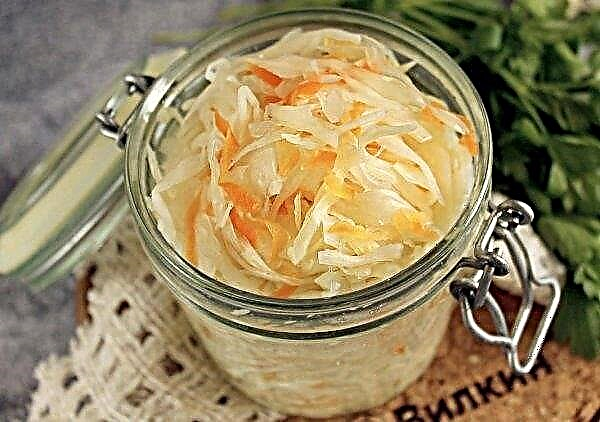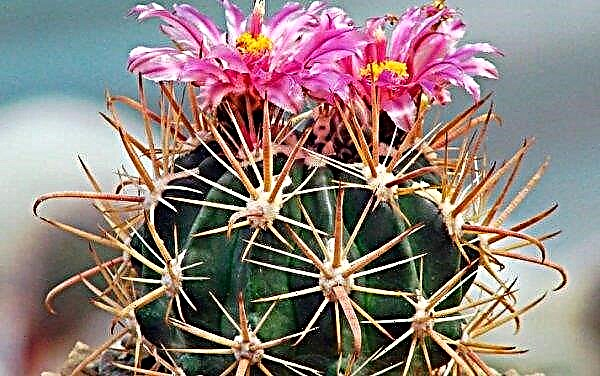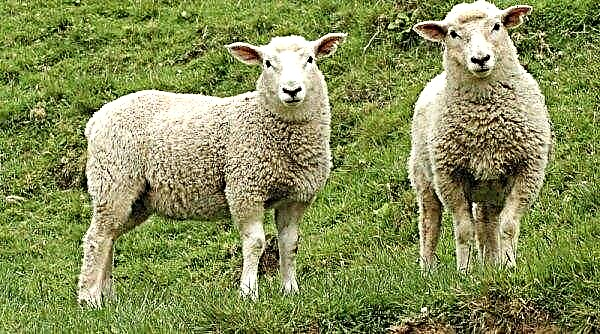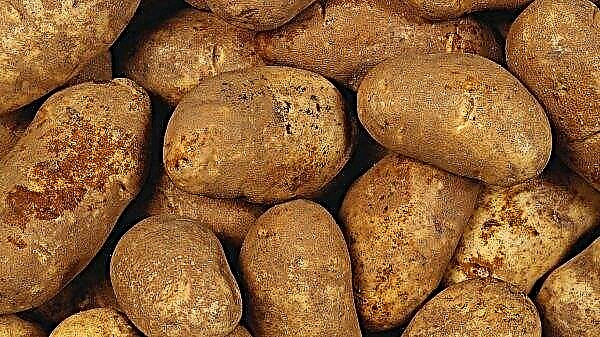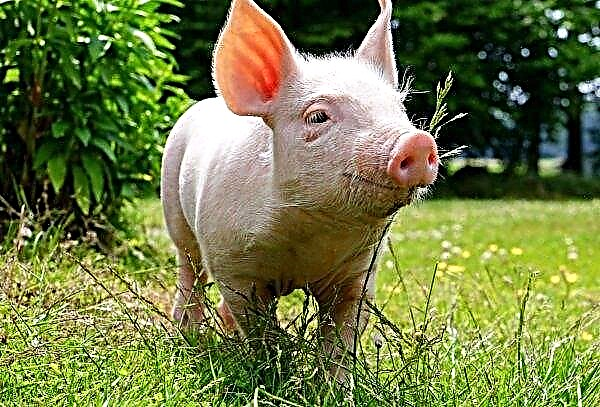In the past few decades, Chinese juniper has been grown in all regions of the country and the world. Due to its resistance to frost and drought, as well as its unpretentiousness in care, this species is increasingly gaining popularity. In this article you can read a description of the most prominent representatives of Chinese juniper, as well as learn about the features of their cultivation.
Description of Chinese Juniper
The Latin name for Chinese Juniper is Juniperus chinensis. The culture belongs to the Cypress family. Plants can be monoecious and dioecious, depending on the variety. The height of adult shrubs is about 20 m. The trees have a narrow-conical or columnar crown; shrub varieties have a rounded or pyramidal shape. Shoots saturated dark green in diameter about 2 mm. The bark is gray-red, peeling off a little.
Did you know? According to popular belief, if you dreamed about juniper, it means that pleasant changes in life (wealth and luck) are expected.
Depending on the variety, needles can be needle-shaped or scaly. Cones, in the first few weeks after ripening, are covered with a dense white coating. Over time, they darken, becoming brown or black. Each cone of the Chinese juniper contains 2–4 elongated seeds with a glossy surface. Seeds ripen in the second year after planting.
The culture got its name due to its habitat. This plant is most often found in China, North Korea and Japan. In Europe, Chinese juniper began to grow only in the XIX century.
 Young plants have a low growth rate - annual growth is only 5-6 cm. With age, shrubs and trees accelerate the growth rate to 10-12 cm
Young plants have a low growth rate - annual growth is only 5-6 cm. With age, shrubs and trees accelerate the growth rate to 10-12 cm
Popular varieties
There are several common varieties of Chinese juniper. All of them have a certain similarity between themselves. Each variety is able to withstand severe frosts (up to -25 ° C).
Before choosing the right variety, try to study the description of each of them in advance. Thanks to this, you can choose a plant that can fit perfectly into the composition of your garden plot.
Obelisk
The height of the juniper of the Chinese variety Obelisk is about 3 m. The diameter of the narrow-conical crown is not more than 1.5 m. The needles are dark green in color, with a slight silver coating. The annual growth of the plant is about 25 cm. Young shoots are characterized by a light green color and eventually turn brown-red.
The obelisk is hardy grade. It is able to grow, without negative consequences, at temperatures up to -24 ° C. Also, the Obelisk can tolerate drought.

Blue
This evergreen shrub has a height of 4 m and a crown diameter of 2 m. The shape of the crown is wide-pyramidal. Spiky needles are green-blue with a bluish-silver coating.
Blue Juniper has a developed root system, which allows the plant to harden in the ground. The peculiarity of this variety is that you can plant a bush in the city. It does not respond to increased levels of dust in the air or to a lack of oxygen.

Goldfern
Juniper Chinese Goldfern cultivar has a moderate growth rate. A distinctive feature is that the needles are formed by unusual golden-green needles. With the onset of spring, their colors become brighter, which only enhances the beauty of the garden.
The height of the plant is about 2 m. The oval crown reaches a diameter of 1.5 m. This variety has high frost resistance. Very often used for growing in house gardens and rock gardens.

Monarch
Juniper Monarch is a beautiful shrub with an irregular columnar crown. The height of an adult plant reaches 2 m and a width of about 1 m. The growth rate is slow, so the annual growth is only 3-5 cm.
The needles are prickly, green-blue. Often planted in heather gardens. Ideal for both single landing and group landing.

Landing and care
Before embarking on a planting, you must select high-quality seedlings. The purchase is made in specialized nurseries or the material is grown on their own. Plants must have a closed root system, because in the open air the bushes can dry out and die.
Important! The acidity of the soil for planting should be 4-7 pH.
If you decide to engage in the production of planting material, then do it better with seeds. Growing Chinese juniper in this way allows you to get the first seedlings only 2 years after planting. Before planting seeds, it is necessary that they pass stratification. First, the seed is stored at a temperature of + 25 ° C to + 30 ° C for a month. After that, they should be stored for 4 months in cooler conditions (from + 13 ° C to + 15 ° C). Seeds that have passed stratification are sown in containers, deepening by 3 cm. In the fertile soil, which is filled with containers, you need to add a little soil from under the juniper crops so that the mycorrhiza of the fungus, which is in symbiosis with the roots, spreads faster.
Video: Planting and caring for juniper
Planting care consists of irrigation carried out at intervals of 2 days. After 2 years, when the first shoots appear, you can plant in open ground.
Before planting (in autumn), you need to do soil preparation. Mix peat, turf soil and sand (in a ratio of 2: 1: 1). You need to plant plants so that the sun's rays fall on the bushes only before lunch. The depth of the landing pit should be at least 60 cm.
Important! Planting seedlings is carried out at a distance of 1 m from each other. Thanks to this, the correct development of the root system is ensured.
Further planting technology is as follows:
- Pour a 15-cm layer of drainage (broken brick) into the hole to protect the rhizome from waterlogging.
- Fill the drainage layer with soil and place the seedling inside.
- Leave the root neck above the ground.
- Spread the root system and fill the hole with soil.
- Mulch the trunk circle using a straw or spruce branches. The height of the mulch should be 25 cm.

Chinese juniper is unpretentious in care, but does not accept dry soil, so you need to water the plants every week, using 10 liters of clean water for each bush. In hot summers, do not forget to spray the crown with clean water. It is better to carry out work in the morning or in the evening, so that under the influence of direct sunlight on the crown does not appear burns.
The crop does not need plentiful feeding; it is only necessary in the spring, before the beginning of April, to make 200 g of nitroammophoski under each bush. Such top dressings make the crown lush, and also help the juniper to form beautiful coniferous needles and cones.
Forming pruning is not required for shrubs. It is enough to remove dry, diseased and damaged branches only in spring.
Did you know? In Russia, juniper bark was used to make dishes. Its peculiarity was that in jugs of this material the products did not deteriorate, the milk did not even sour.
As protection against frost, the following procedures are carried out:
- push the branches to the trunk and tie the bushes so that the shoots do not break under the weight of a layer of snow;
- cover the basal part with fir spruce branches;
- cover the plant with burlap or craft paper, fastening the edges with a stapler.

Diseases and Pests
Chinese juniper is affected by the following diseases:
- Fusarium. The roots of the plant become brown, and the needles dry and fall off. The treatment of the disease consists in spraying with “Fundazole” (40 g per 10 liters of water) or “Champion” (30 g in 6 liters of water).

- Branch drying. The symptoms of the disease include: drying of the cortex, the appearance of brown spots on the surface of the trunk. To get rid of the disease, spraying with Skor solution (20 g per 5 l of water) is carried out.

- Alternariosis. The disease manifests itself in the form of brown spots on the needles and black coating on the entire surface of the plant. Spraying is carried out using copper sulfate (10 g per 10 l of water).

On the surface of the bushes there may be pests that contribute to the deformation of the bush and its death:
- Carbon Moth - a small butterfly whose caterpillars eat up needles. Against the carbon-winged moth, it is recommended to treat the juniper with Decis solution (30 g per 6 l of water).

- Juniper Scale - small insects sucking juice from pine needles. In the fight against scale insects use "Ekgio" (20 g per 10 liters of water).

- Gallitsa - insect larvae affecting needles. To destroy the gall midge, it is necessary to process the crown with the Aktellika solution (30 g per 5 l of water).
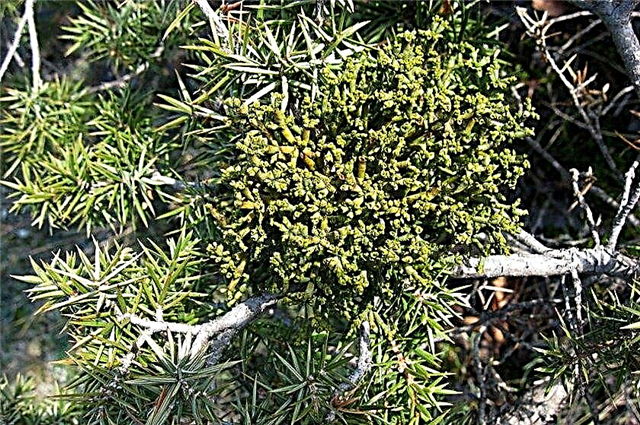
All spraying is carried out 2 times a month, preferably in cloudy weather.
So, now you know that Chinese juniper includes various varieties, and you can choose the one that fits perfectly into your garden. Carefully monitor the features of planting and care, so as not to damage the root system, and the plant will delight you for a long time.







